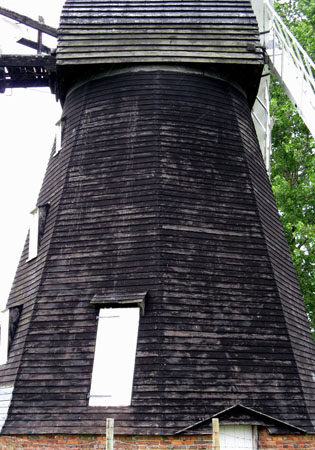
Before work started.
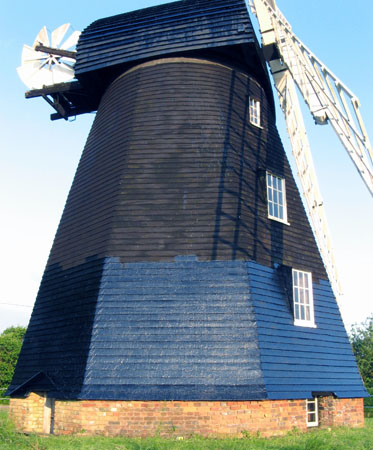
Base of smock painted with first coat.
The Smock (or body) of the mill had needed repainting for some time, but the cap roof had not been painted for exactly 30 years since it was replaced in May 1978 during the restoration work. Based on past experience, tests were done with different types of material and advice sought from other people who maintain historic weatherboarded buildings. The conclusion was that the longest lasting material should be traditional tar, which will also give the mill the most authentic appearance. However, tar is a material which has to be handled with great care and much thought was given to this during the whole process.
We had a number of volunteers, all the issues surrounding the work were considered, the materials were organised, and the appropriate powered access hoist (or cherry-picker) was chosen to be hired to reach all parts of the windmill. The only factor we could not control was the weather, of course. However our availability of volunteers was good in the second week of June, and by late May the Met Office's 15 day forecast was looking promising, so we decided to start on Friday 6th June. The mill (with the exception of a single coat on the aluminium roof) had been given two coats of tar by 3pm on Wednesday 11th June. We had 2 hot days on the Sunday and Monday, and the rain stayed away until Wednesday night. The granary was given its second coat on Friday morning.

Before work started.

Base of smock painted with first coat.
The hired access platform (or cherry-picker) was used to access all the higher parts of the windmill.
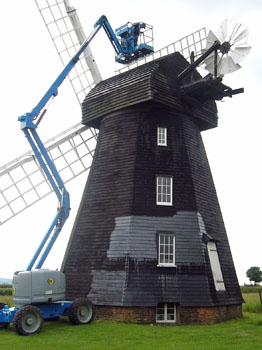
It could reach all parts of the mill.

The base looks large on the ground.
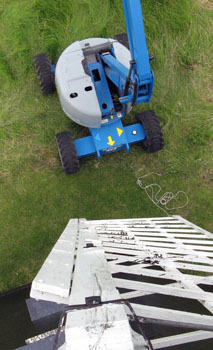
But from 40 feet above, it looks much smaller.
The roof of the cap is covered in aluminium.
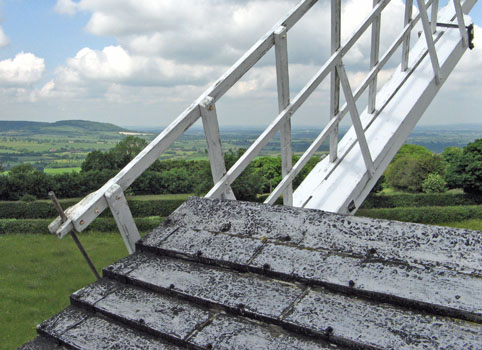
It had not been painted for 30 years.
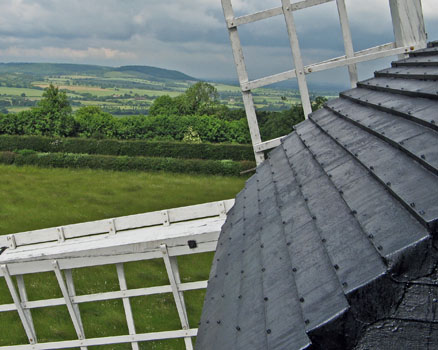
After painting, it looked very different.
One surprise was a hole in the cap roof.

A mystery object (or lightning) had penetrated the aluminium.
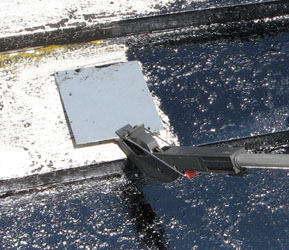
After painting, it looked very different.
The front of the cap was the most difficult part to access.

The lower part could be reached between the sails.
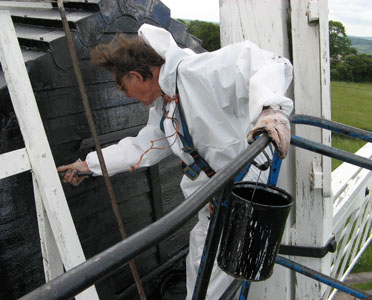
The upper part could only be reached by Geoff from a horizontal sail.
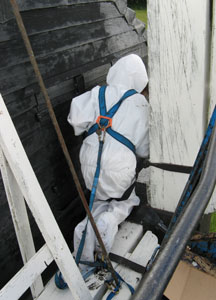
Below are two views of the mill after work was completed.
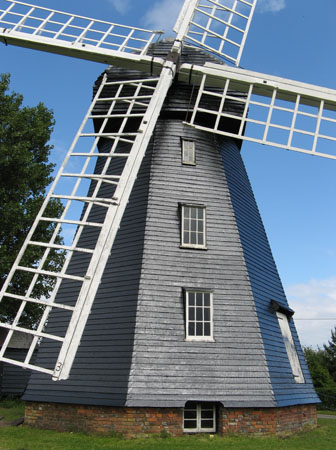
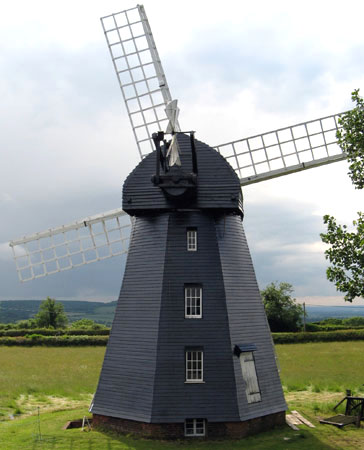
And finally, some of the people who were involved with the work.
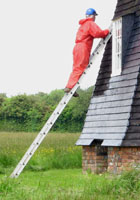
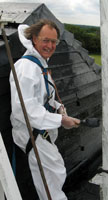

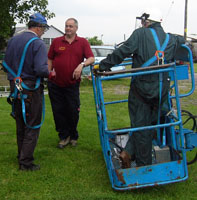
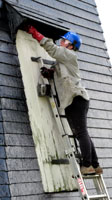
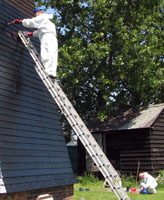
We are extremely grateful to all those who helped with this project. The work was done by 4 committee members, with the help of an additional 7 volunteers. Many thanks to Stella Boll and Betty Hardy who contributed some of the photos on this page.
This page ( painting-2008.php ) was last updated on 7 February 2018.
The Chiltern Society is a Registered Charity No 1085163 and a Company Limited by Guarantee Registered in England and Wales Registration No 4138448.